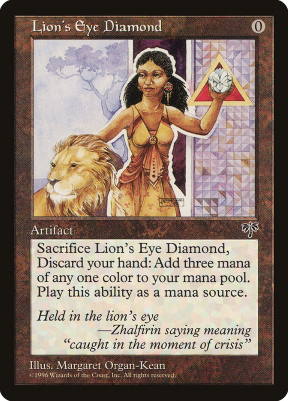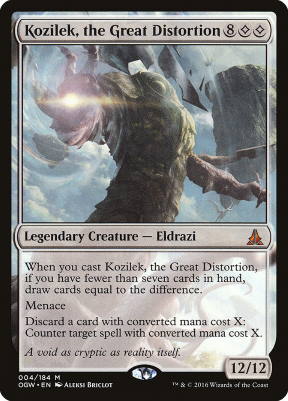Owning an extensive collection of Magic cards can be difficult. Unless you’ve been playing for awhile or you’re able to buy lots of cards, you might not have access to everything you want. For casual games of MTG, though, there’s a cheap solution: proxies. But first, what are proxies?
Proxies are just cards or objects that represent other cards. For example, you could write Rhystic Study on a basic Island and treat that card like a real Rhystic Study. As long as everyone in your play group agrees to it, this can be a quick and easy way to play with any card you want. Proxies are also useful for testing out new cards, and then buying them later if they fit into your deck.
Of course, there are lots of questions surrounding proxy cards: What’s the best way to make them? Can you use them in tournaments? Are they illegal? This article will answer all of these questions and more.
Table of Contents:
- Pros and Cons
- What are Proxies in MTG
- What is WOTC’s Stance on Proxies
- Why Should I Use Proxies
- How Do I Make MTG Proxies
- End Step
Pros and Cons
| Pros | Cons |
| Cheap | Not legal in sanctioned play |
| Quick |
What Are Proxies in MTG?
A proxy in MTG is anything that represents another card or token. Often times, this will be a card or token that’s been written on. You could also write the card’s name on a piece of paper and put it into a sleeve with another card. You could even use game pieces from something other than Magic. As long as your

As an example, I commonly use proxies to represent certain tokens during a draft. If nobody happened to open the token I need, I’ll often just use an ad card or the backside of another token. I tell my opponent what the proxy represents, and we make sure the
Of course, using proxies for tokens isn’t exactly the same as using them for cards. You won’t have to shuffle tokens into your deck, and they’re much simpler to keep track of. When it comes to using proxies for actual MTG cards, there are more rules to consider.
What is WOTC’s Stance on Proxies?
In the past, there has been some confusion on WOTC’s official policy on proxies. They’ve since outlined a clear and consistent stance on the use of proxies in different situations.
When Can’t I Use Proxies in MTG?
First, you have to use real Magic cards in official events. Of course, this makes sense: if you’re going to play in their events, they want you to play with their products. Let’s take a look at their policy on the subject:
Cards used in DCI-sanctioned events must be authentic Magic cards. The only exception is if a card has become damaged during the course of play in a particular event (for instance, a shuffling accident bends a card or a drink gets spilled); in that case a judge may issue a proxy for use only for the duration of that event so the player can continue playing.
Wizards
In addition to their use in official events, WOTC doesn’t allow proxies when they are counterfeit cards. Selling or trading counterfeits is a violation of copyright law, and WOTC’s official position on them is clear:
Wizards remains committed to vigorously protecting the Magic community from counterfeiters. We will remain vigilant for illegal activity, and we will continue to work quickly and decisively with law enforcement agencies around the globe to protect against the creation or distribution of counterfeit Magic cards.
Wizards
Counterfeits are cards that weren’t printed by WOTC, but try to pass themselves off as real Magic cards. Keep in mind: most proxies aren’t counterfeit cards. Writing a card’s effect on a piece of paper or printing it’s image isn’t illegal. In these cases, it’s clear that the proxy isn’t an official card, and it wouldn’t pass as one under scrutiny.

When Can I Use Proxies in MTG?
So far, we’ve gone over policy for official events, but what is WOTC’s stance on proxies in casual games? After all, the rise of commander has seen more and more games happening outside of DCI-sanctioned events. Are proxies allowed at the kitchen table?
WOTC has told us plainly that they have no problem with the personal use of proxies:
Wizards of the Coast has no desire to police playtest cards made for personal, non-commercial use, even if that usage takes place in a store. What we really care about is that DCI-sanctioned events use only authentic Magic cards, and that we stop counterfeits.
Wizards
It’s important to note that WOTC makes an assumption in this position: proxies are just for testing, and players who use them will eventually buy the real cards. This very well could be true for some players.
I’ve personally used proxies to test new cards in commander decks before buying or trading for them. If you’re testing for a standard or modern event, it also makes sense to use proxies rather than have a playset of every legal card on standby.

Still, some players might print out proxies with no intention of ever buying the real card. Although WOTC might not approve of this, you can argue that their policy on playtest cards extends to the use of any casual proxy (so long as it isn’t counterfeit).
After all, there’s always a chance you’ll buy the real card for your deck, and they can’t exactly enforce an anti-proxy policy at your kitchen table. They’ve clearly stated that their concerns lie with official events and counterfeits, so feel free to use proxies in other situations.
Why Should I Use Proxies?
Perhaps you’re wondering why you should consider using proxies. After all, many players strongly prefer the look and feel of real cards. You also don’t have to worry about when you can and can’t play your deck if you only have real cards. Still, there are good reasons to use proxies.
Casual Play
If you play magic casually, then you might want to consider using proxies. Magic can be an expensive hobby to keep up with, and there are thousands and thousands of cards to choose between. If you want to play with a rare or expensive card, it might be worth looking into proxies. While some players enjoy having a “complete” deck, others just care about the gameplay. As long as your play group is ok with it, proxies can give you the experience without the price.

I want to stress this again, though: make sure your play group is ok with using proxies. There are many reasons why players might want to use real cards. Whenever there’s conflict, it’s up to everyone to find a solution that works for the whole table. The important thing here is to communicate! Try to be reasonable, listen to the other players, and look for a compromise when possible.
Testing
Proxies are also useful when you’re testing new decks. This may take the form of playtest sessions, in which you play lots of decks to understand a format. It could also be in more casual settings, as we’ve discussed. Maybe you’re fine-tuning an old EDH deck but don’t want to buy the cards right away. Using proxies can let you try out new ideas quickly.
How Do I Make MTG Proxies?
Now that we’ve gone over when you can use proxies and why they’re useful, how do you make them? You could use a sharpie or marker to write on a Magic card, but most players don’t want to deface any of their cards, even their draft chaff. Thankfully, there are other easy ways to make proxies.
RELATED: Crimson Vow Draft Guide: An Expert Analysis
Written Proxies
Perhaps the easiest way to make proxies is to just use a slip of paper. You could write down all the information, like its card type and text box, or just its name. If you go for the latter, make sure to have the official image available in case you need it. Using its Gatherer page will also show any official rulings, just in case something odd comes up.

This method works best if your deck is sleeved. You can just put the paper in front of any other card, like a basic land. Personally, I use cards that are different colors than my deck (like using Fireball in a white/black deck) just in case the paper falls out. This way, I can clearly tell which cards are actually in the deck and which are proxy slots.
Printing Proxies
If you want your proxies to look nicer, you could always print the image of the card. This method also lets you see the text box and mana cost without looking at your phone or computer. It even lets other players see the art from across the table, so they can recognize the card right away.

You can use Microsoft Word to print out these proxies. With the following steps, you should be able to get nine cards on a single sheet of paper.
- Set the top, left and right margins to 0.12″. Set the bottom margins to 0.5″. This gives you the most room within the printable space of the page.
- Copy the image from any MTG search engine, such as Gatherer or Scryfall. Paste it into the Word doc.
- Change the dimensions of the image using the “Picture Format” tab. If you change the height to 3.4″, the width should automatically change to 2.44″. If not, do both manually. Add spaces in between images on the same row if you want.
- Print the page, then cut out each image. They should easily fit into a sleeve with a real card behind them.
These steps should give you clean proxies that fit into sleeves, but which are obviously fake. Printing proxies like this isn’t creating counterfeits, since they are clearly distinguishable from real cards.
End Step
Hopefully this article has answered any questions you have surrounding proxies. We’ve gone over when you can and can’t use proxies in MTG, and what makes a card counterfeit. We’ve also discussed why you might want to use proxies and how to make them yourself. You should now have the tools to test out your new decks, or play the thousand dollar deck you’ve always dreamed of building!
